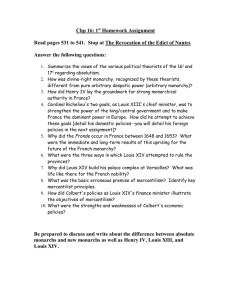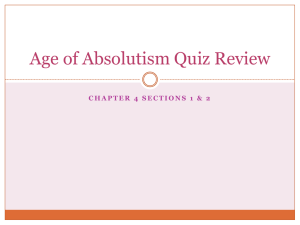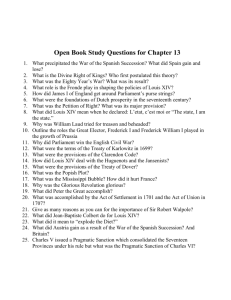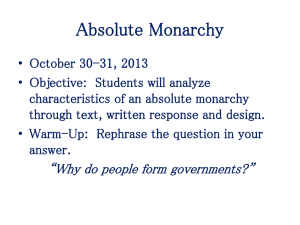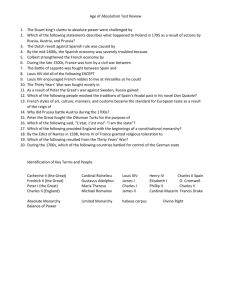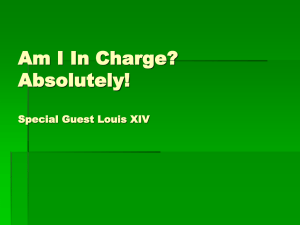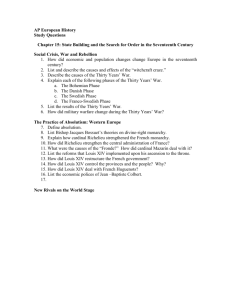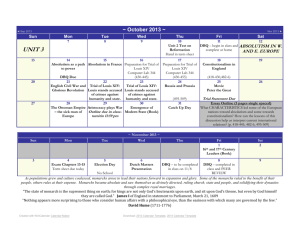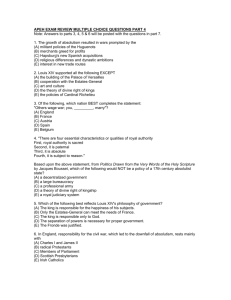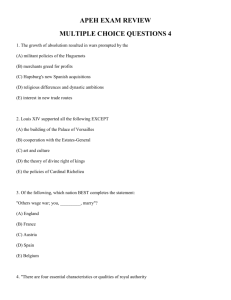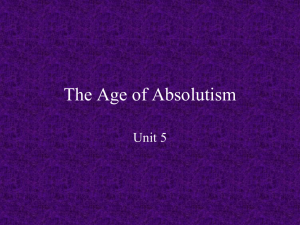Absolute Monarchs Study Guide: Chapter 5
advertisement
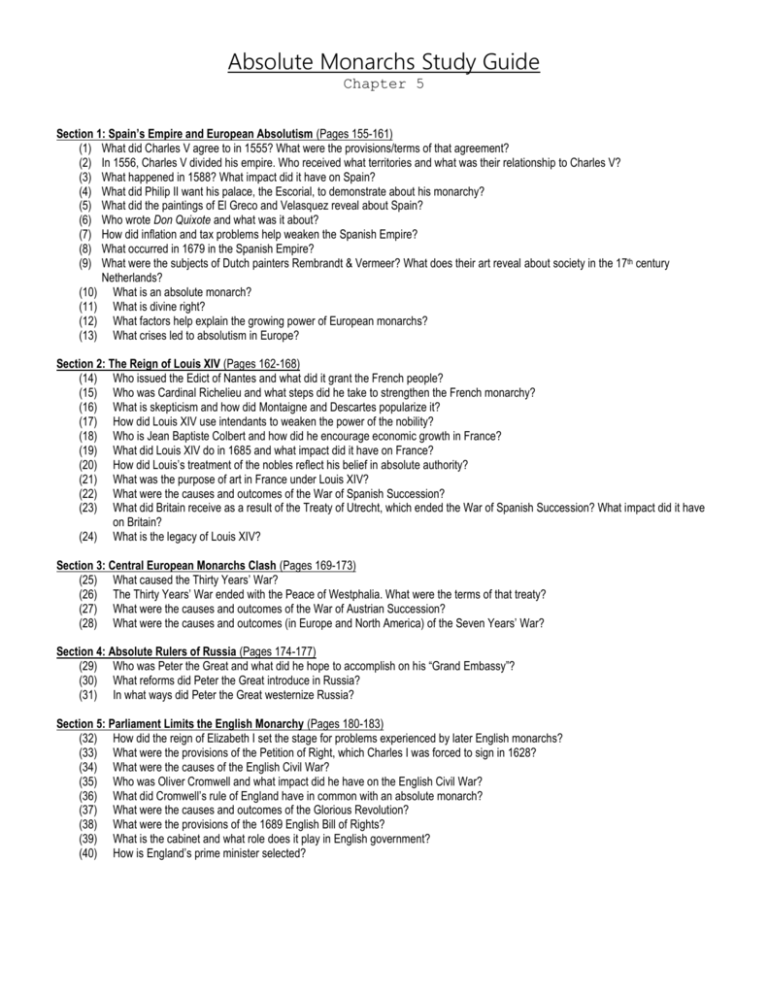
Absolute Monarchs Study Guide Chapter 5 Section 1: Spain’s Empire and European Absolutism (Pages 155-161) (1) What did Charles V agree to in 1555? What were the provisions/terms of that agreement? (2) In 1556, Charles V divided his empire. Who received what territories and what was their relationship to Charles V? (3) What happened in 1588? What impact did it have on Spain? (4) What did Philip II want his palace, the Escorial, to demonstrate about his monarchy? (5) What did the paintings of El Greco and Velasquez reveal about Spain? (6) Who wrote Don Quixote and what was it about? (7) How did inflation and tax problems help weaken the Spanish Empire? (8) What occurred in 1679 in the Spanish Empire? (9) What were the subjects of Dutch painters Rembrandt & Vermeer? What does their art reveal about society in the 17th century Netherlands? (10) What is an absolute monarch? (11) What is divine right? (12) What factors help explain the growing power of European monarchs? (13) What crises led to absolutism in Europe? Section 2: The Reign of Louis XIV (Pages 162-168) (14) Who issued the Edict of Nantes and what did it grant the French people? (15) Who was Cardinal Richelieu and what steps did he take to strengthen the French monarchy? (16) What is skepticism and how did Montaigne and Descartes popularize it? (17) How did Louis XIV use intendants to weaken the power of the nobility? (18) Who is Jean Baptiste Colbert and how did he encourage economic growth in France? (19) What did Louis XIV do in 1685 and what impact did it have on France? (20) How did Louis’s treatment of the nobles reflect his belief in absolute authority? (21) What was the purpose of art in France under Louis XIV? (22) What were the causes and outcomes of the War of Spanish Succession? (23) What did Britain receive as a result of the Treaty of Utrecht, which ended the War of Spanish Succession? What impact did it have on Britain? (24) What is the legacy of Louis XIV? Section 3: Central European Monarchs Clash (Pages 169-173) (25) What caused the Thirty Years’ War? (26) The Thirty Years’ War ended with the Peace of Westphalia. What were the terms of that treaty? (27) What were the causes and outcomes of the War of Austrian Succession? (28) What were the causes and outcomes (in Europe and North America) of the Seven Years’ War? Section 4: Absolute Rulers of Russia (Pages 174-177) (29) Who was Peter the Great and what did he hope to accomplish on his “Grand Embassy”? (30) What reforms did Peter the Great introduce in Russia? (31) In what ways did Peter the Great westernize Russia? Section 5: Parliament Limits the English Monarchy (Pages 180-183) (32) How did the reign of Elizabeth I set the stage for problems experienced by later English monarchs? (33) What were the provisions of the Petition of Right, which Charles I was forced to sign in 1628? (34) What were the causes of the English Civil War? (35) Who was Oliver Cromwell and what impact did he have on the English Civil War? (36) What did Cromwell’s rule of England have in common with an absolute monarch? (37) What were the causes and outcomes of the Glorious Revolution? (38) What were the provisions of the 1689 English Bill of Rights? (39) What is the cabinet and what role does it play in English government? (40) How is England’s prime minister selected?

